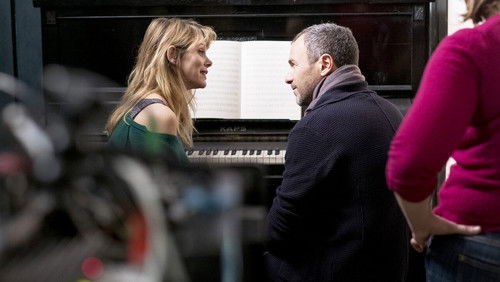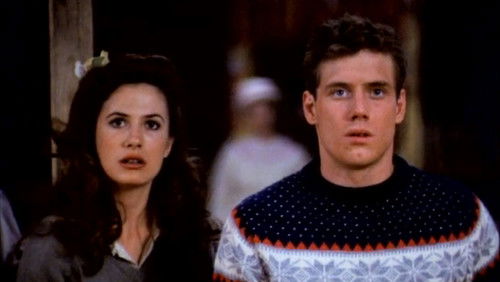Nemuri Kyôshirô: Mashôken (1965)
31KNemuri Kyôshirô: Mashôken: Directed by Kimiyoshi Yasuda. With Raizô Ichikawa, Michiko Saga, Machiko Hasegawa, Masako Aboshi. Tsurumatsu, a young boy, is supposed to be a new Lord but he’s not really interested, he would rather be a carpenter. So he gets kidnapped and it’s up to Nemuri Kyoshiro to save him.
“SWORD OF Satan (1965) was the 6th film in the u0026quot;Sleepy Eyes of Deathu0026quot; series for star Raizo Ichikawa, who played a u0026quot;rogue swordsmanu0026quot; named Kyoshiro Nemuri, the red-haired illegitimate son of a European missionary and a Japanese courtesan. Nemuri wandered the Japanese countryside, much like his blind contemporary Zatoichi, and got mixed up in other peopleu0026#39;s troubles while fending off plenty of his own. Here, he offers harsh words to a woman from a samurai family seeking money by selling him her body for the night and when she kills herself the next morning he takes the blame and offers to look out for the womanu0026#39;s young son, Tsurumatsu, who becomes the pawn in the internal politics of the regionu0026#39;s Iwashiro Clan. Without the boy as heir to the title of Lord, the clan is likely to be dissolved by the Shogunate. When the boy declares heu0026#39;d rather grow up to be a carpenter like his maternal grandfather, Nemuri decides to take a stand and protect the boy from the Iwashiro clansmenu0026#39;s efforts to abduct him. Even though Nemuri was supposed to be much more cold-blooded than, say, Zatoichi or Ogami Itto (LONE WOLF AND CUB), he seems to be cut from the same moral cloth as those two heroes as he risks his life here for an unselfish cause.u003cbr/u003eu003cbr/u003eComplicating matters is the fact that Orin, a woman with a lethal command of throwing weapons, is out to kill Nemuri to avenge a past wrong and decides to join up with the Iwashiro men to undermine Nemuriu0026#39;s efforts to hide the boy and spirit him to a stable home somewhere. The Iwashiro men are no match for Nemuriu0026#39;s swordplay skills and his deadly u0026quot;Full Moon Cut,u0026quot; so they recruit the finest swordsman from an allied clan to help their cause. There are plenty of sword battles along the way, usually pitting Nemuri against vastly superior numbers of opponents. At one point, he even breaks up a black mass being conducted by a priest with a sideline in abortions.u003cbr/u003eu003cbr/u003eThe plot is rather standard for this kind of film and not all that dissimilar from a typical Zatoichi plot of the era. Itu0026#39;s paced well and keeps us engrossed throughout a tidy 75-minute running time. The action is entertaining if a bit far-fetched at times, as in a scene where Nemuri is tied up but still manages to fight off a band of swordsmen and get himself freed through a highly implausible maneuver. The naturally intense Ichikawa (THE LOYAL 47 RONIN, 1958 version) brings a melancholic undertone to the role of Nemuri and plays him as someone keenly aware of his u0026quot;bad karmau0026quot; and fully accepting of whatever fate delivers to him, although heu0026#39;s quick to put up a fight when he can. The duplicitous Orin (Michiko Saga) has the largest role among the women in the film and even though sheu0026#39;s nominally a villain and out to kill him, Nemuri recognizes a certain level of deep understanding between them. This isnu0026#39;t the best samurai film Iu0026#39;ve ever seen, but itu0026#39;s certainly an enjoyable one.u003cbr/u003eu003cbr/u003eDirector Kimiyoshi Yasuda also directed other Sleepy Eyes of Death films as well as some of the better Zatoichi films (e.g., ZATOICHI MEETS THE ONE-ARMED SWORDSMAN) and the classic period monster film, DAIMAJIN (1966).”









